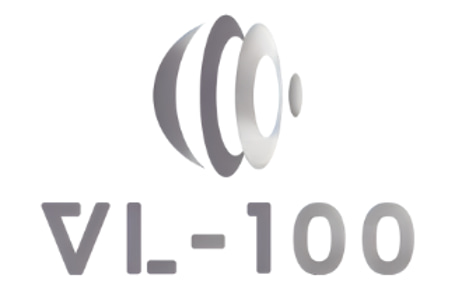
Understanding the 1940nm Wavelength in Medical Lasers: Clinical Insights and Applications
CN
3/27/20253 min read

Understanding the 1940nm Wavelength in Medical Lasers: Clinical Insights and Applications
The 1940nm wavelength has recently gained significant attention in the medical field, especially in dermatology and endovascular procedures. This wavelength, often found in diode lasers, combines unique properties that make it highly effective for a range of medical treatments. In this blog, we will explore the science behind the 1940nm wavelength, its clinical applications, and the benefits it offers to both practitioners and patients.
What Makes the 1940nm Wavelength Unique?
The 1940nm wavelength falls within the infrared spectrum of light and has a strong affinity for water absorption. This is particularly important in medical laser applications because the tissues in the human body are largely composed of water. The 1940nm wavelength offers optimal penetration for soft tissues, such as the skin and vascular structures, without causing unnecessary damage to surrounding tissues.
For dermatological treatments, the 1940nm laser allows for precise energy delivery, which is ideal for procedures like skin resurfacing, collagen remodeling, and vascular treatments (such as endovenous laser therapy or EVLT). Additionally, its deeper penetration allows for more effective skin tightening and the treatment of spider veins, promoting faster recovery and less downtime.
Clinical Applications of the 1940nm Wavelength
Endovenous Laser Therapy (EVLT) EVLT is one of the most common uses of the 1940nm wavelength. In endovascular procedures, the 1940nm laser is used to treat varicose veins by delivering energy directly to the vein, causing it to close and eventually be absorbed by the body. The deep penetration of the 1940nm wavelength allows for effective ablation of veins, offering an effective, minimally invasive solution with faster recovery times compared to traditional vein stripping surgery.
According to a clinical study published in the Journal of Vascular Surgery, patients who underwent EVLT with a 1940nm wavelength demonstrated improved results and faster recovery times compared to those who received traditional treatments. The study concluded that the 1940nm wavelength's ability to target deeper veins with minimal thermal damage to surrounding tissues was a significant factor in the success of the procedure.
Skin Resurfacing & Collagen Remodeling The 1940nm wavelength is highly effective in non-ablative skin resurfacing procedures. By targeting water within the skin, it stimulates collagen production, promoting the rejuvenation of the skin's structure. This process helps with skin tightening, wrinkle reduction, and scar treatment, providing a more youthful appearance with little to no downtime.
In a clinical study published in Lasers in Surgery and Medicine, researchers found that patients treated with a 1940nm laser experienced significant improvements in skin texture, collagen density, and elasticity, with minimal discomfort and rapid healing.
Vascular Treatments For vascular treatments, the 1940nm wavelength is particularly effective in treating spider veins and small vascular lesions. The selective absorption by hemoglobin and water allows for precise targetingof the blood vessels without affecting the surrounding tissue. This leads to faster clotting and absorption of the veins, reducing the risk of complications and side effects.
A clinical study published in the Journal of Cosmetic and Laser Therapy confirmed that the 1940nm laser is particularly effective in vascular treatments, showing excellent results for spider veins and other superficial vascular lesions. The study also highlighted the minimal downtime and low risk of complications, making it an ideal treatment option for patients seeking non-invasive solutions.
Advantages of the 1940nm Wavelength
Deeper Penetration with Minimal Damage:
The 1940nm wavelength's ability to penetrate deeper tissues with minimal damage to surrounding areas is one of its key advantages. This makes it suitable for a variety of procedures, including vascular treatments and skin resurfacing.Improved Safety and Faster Recovery:
Compared to other wavelengths, the 1940nm wavelength offers enhanced safety due to its precision and minimal thermal damage. Patients experience faster recovery times and reduced risk of scarring, making it a preferred choice for non-invasive treatments.Versatility:
The 1940nm wavelength is highly versatile, as it can be used in a range of clinical applications, from dermatological procedures to vascular treatments and even cosmetic surgeries. This flexibility makes it an invaluable tool in the hands of trained professionals.
Conclusion
The 1940nm wavelength is a cutting-edge technology that has revolutionized laser treatments in dermatology and interventional surgery. Whether it's for endovenous laser therapy, skin resurfacing, or vascular treatments, the 1940nm wavelength offers enhanced precision, faster recovery, and minimized side effects, making it an excellent choice for patients and practitioners alike.
Clinically, it has been shown to provide superior outcomes with minimal downtime, setting a new standard for non-invasive and effective treatments. As medical technology continues to advance, the 1940nm wavelength will undoubtedly play a significant role in the future of laser-based therapies.
For more detailed information, you can refer to the clinical studies published in journals like the Journal of Vascular Surgery, Lasers in Surgery and Medicine, and the Journal of Cosmetic and Laser Therapy.
If you're considering integrating the 1940nm laser into your practice, rest assured that it offers proven, reliable results for a variety of medical and cosmetic applications.
